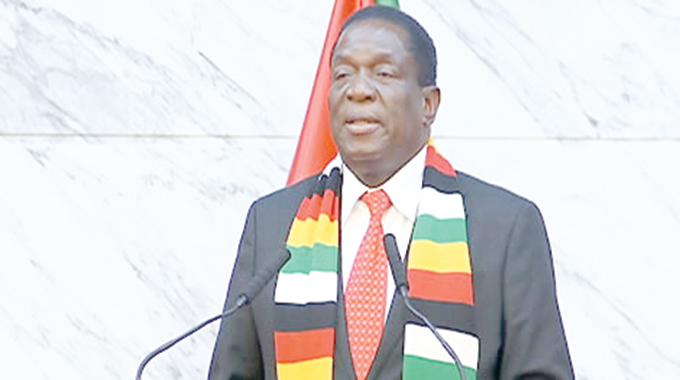
The Sunday News

Darlington Musarurwa, Harare Bureau
ZIMBABWE expects to begin accessing power from Mozambique’s Cahora Bassa as it moves to put its ongoing economic development agenda back on the rails, President Mnangagwa has said.
The Head of State and Government recently met his Mozambican counterpart President Filipe Nyusi to explore ways of deepening relations between Harare and Maputo. The two leaders also discussed the possibility for Cahora Bassa to cover the country’s power deficit. In an interview with US-media company Bloomberg, President Mnangagwa said the deal “is going to be consummated soon”.
“With regard to the issue of electricity, barring the issue of climate change, things were on course. We had seen the need for generating more electricity; this is why we have those various projects I have mentioned.
“There are smaller ones which I have not mentioned, but that was the issue: to make sure that we have adequate energy generation, but since I have been here, I have discussed with my counterpart, the President of Mozambique (Filipe Nyusi), to look at Cahora Bassa assisting us.
“Yes, we are weak on the financial side, but it is possible for us to strike a relationship where we can access the amount of power we need, the deficit we need to cover from Cahora Bassa and I think that is going to be consummated very soon so that we go back on course, but also we continue to implement our own projects in regard to that.”
While water levels in Kariba Dam have dropped to about 33 percent owing to the drought that hit the country during the 2018/2019 rain season, Cahora Bassa is 96 percent full. Power generation at Kariba Hydro-power Station has been cut by 50 percent, resulted in Zesa resorting to load-shedding. Zambia has been similarly affected.
Government believes that its goal to become an upper middle-income economy by 2030, is also anchored on stable electricity supply with indications it the country will need 4 000MW, which is more than 100 percent the current generation capacity. Already, the US$1,5 billion Hwange Thermal Power Station expansion project, which will add an additional 600MW into the grid, is underway.
The other generating units will soon be refurbished. The Batoka Gorge project — expected to generate 2 400MW to be jointly shared by Zimbabwe and Zambia — is well underway after the consortium of General Electric and China Power was awarded the tender for the project.
President Mnangagwa said: “We realise that the projection which we have, if we are going to attain middle-income status by 2030, we need a minimum of 4 000MW of power, so we have several projects in the country which are aimed at achieving that objective . . .
“Also China is supporting us with thermal power generation project at Hwange, which will give us another 600MW of power, but we still need more. This is why this morning (Thursday) I had discussions with GE — General Electric. This is an American company. We have given them a project on the Zambezi — the Batoka Gorge.”
Zimbabwe and Mozambique have also agreed to construct two new ports — one north of Beira and one South of Maputo — in an arrangement that also includes Botswana. Discussions on the project are reportedly advanced. Mozambique is an important gateway for Zimbabwe to the sea. Currently, Maputo port handles the country’s export products such as wheat, fuel, grain and sugar.
As economic activity picks up, particularly in the mining sector, the country expects to move even more cargo through various ports in the region. Cargo volumes are forecast to rise to between 12 and 14 million metric tonnes within the next two years before rising to 20 million metric tonnes in the next five years.
Zimbabwe recently completed the construction of a US$3,5 million dry port facility at Walvis Bay, Namibia. It is believed that the Walvis Bay corridor can provide an alternative link to Europe, North America and South America. Trade experts say local importers and exporters can save more than 10 days in transit time to markets in Europe and America through using Walvis Bay.



